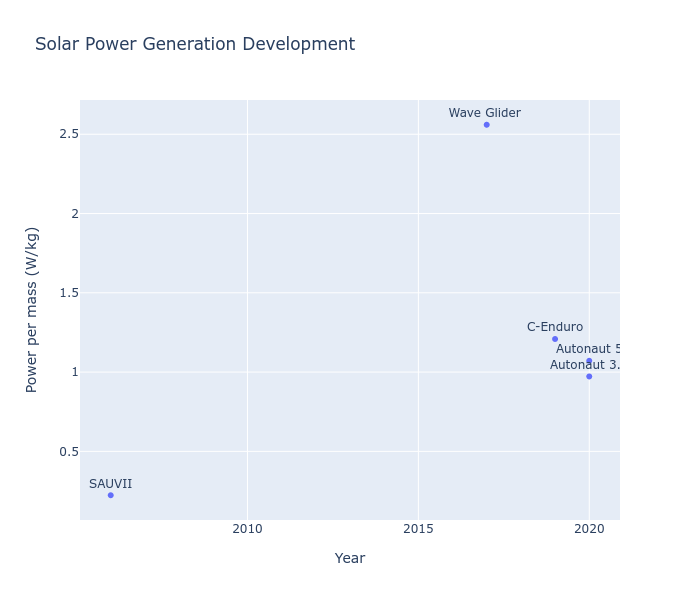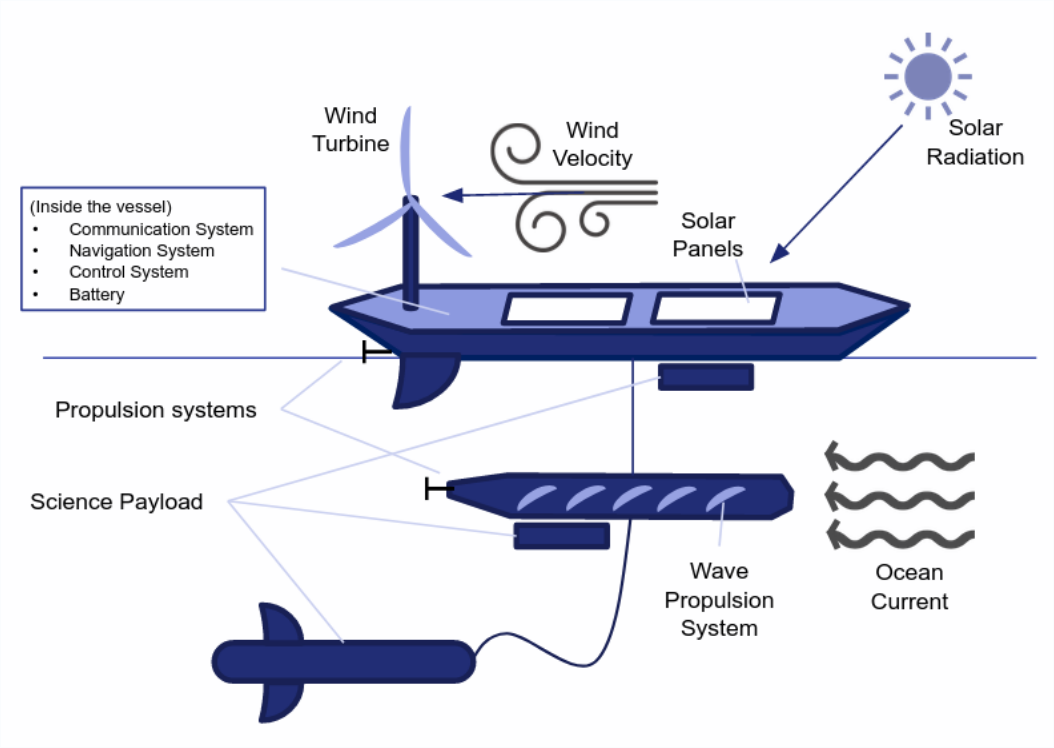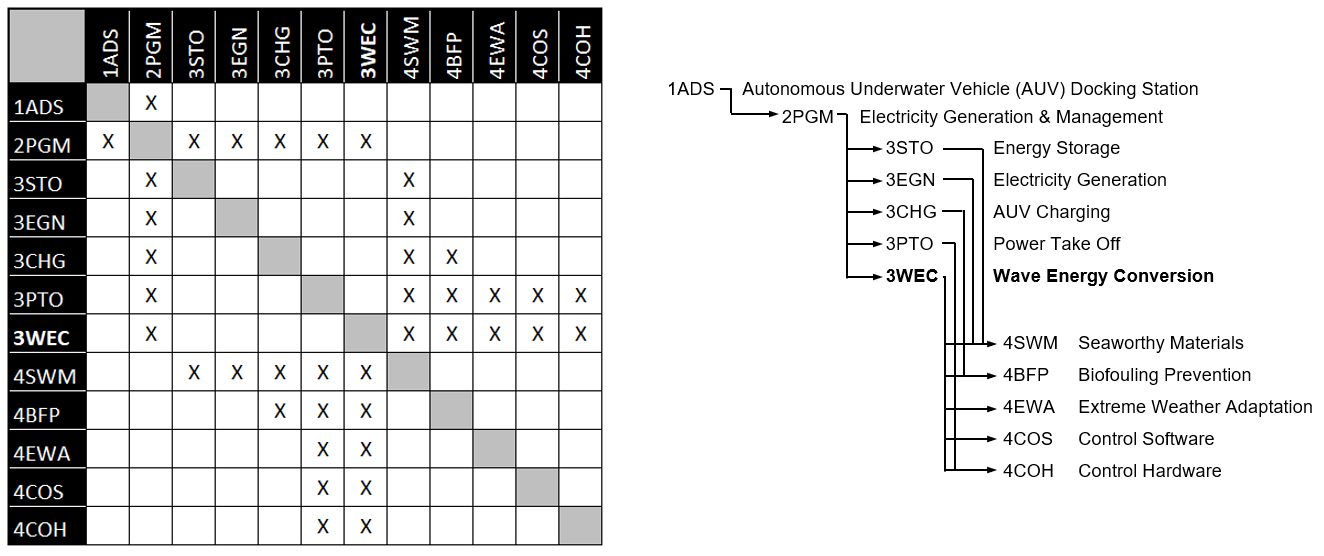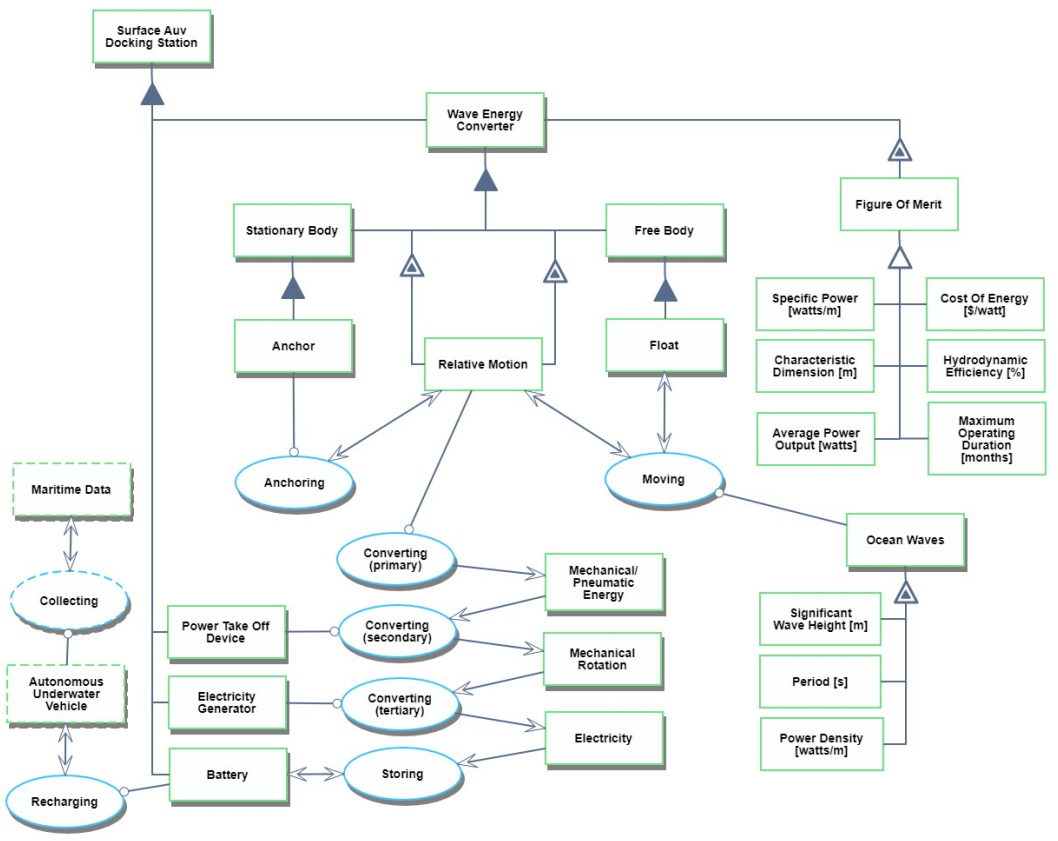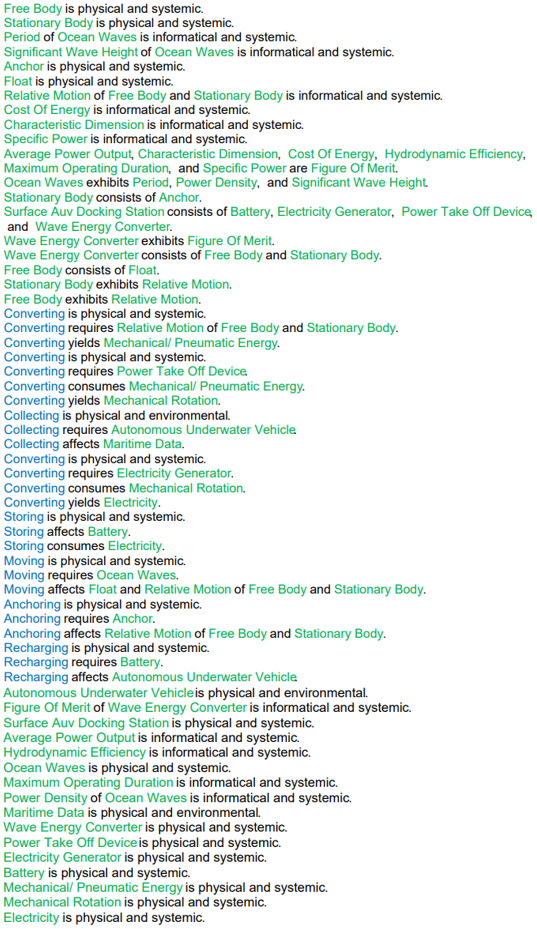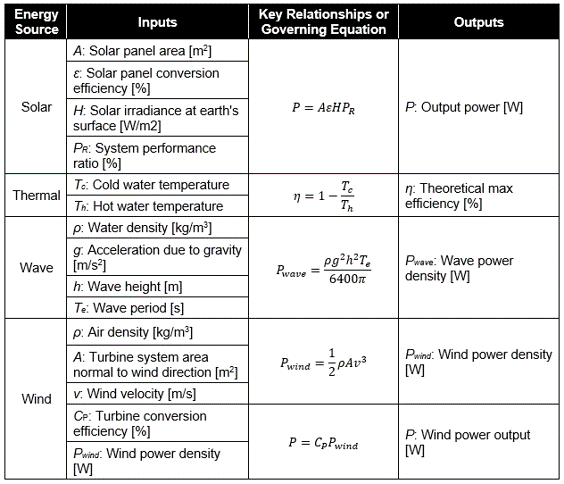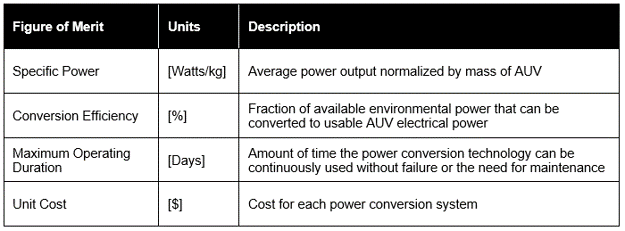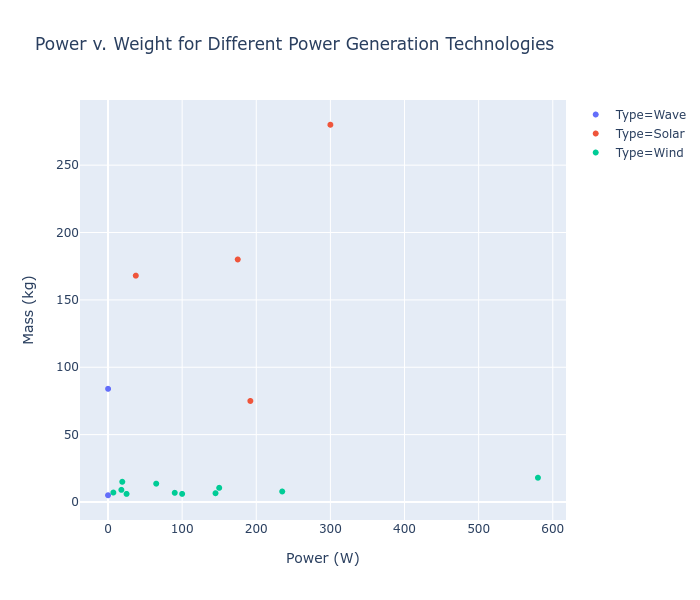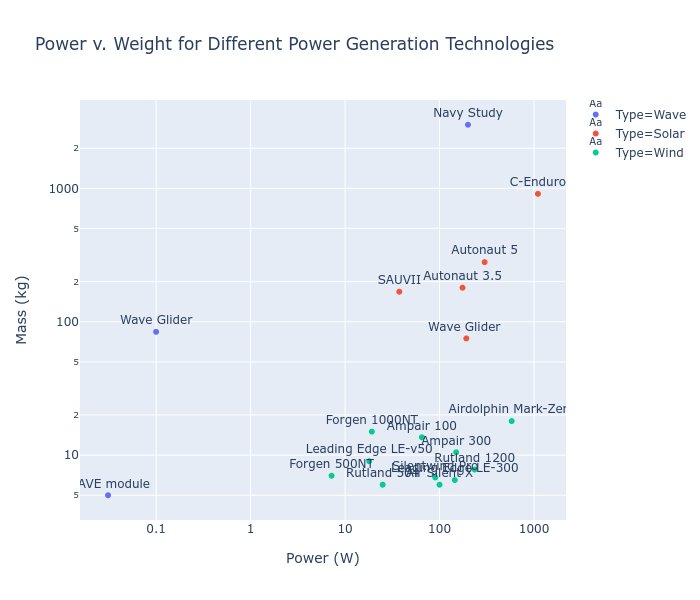Difference between revisions of "In-Situ Power Generation for AUVs"
| Line 12: | Line 12: | ||
[[File:Edited diagram image.png]] | [[File:Edited diagram image.png]] | ||
==Design Structure Matrix (DSM) Allocation== | ==Design Structure Matrix (DSM) Allocation== | ||
Revision as of 02:37, 1 October 2020
Technology Roadmap Sections and Deliverables
This is a technology roadmap for:
- 4GEN - In-Situ Power Generation
This is a “Level 4” roadmap, indicating that it addresses a technology at the subsystem component level. Higher level roadmaps related to this subject would address technology progression at the market level (Ocean Exploration), product level (AUV), and subsystem level (Power System).
Roadmap Overview
Autonomous underwater vehicles (AUV) are widely used to make observe and make sense of the ocean without the limitation of requiring a human-in-the-loop to function. Despite advancements in battery and other energy storage technologies, power availability remains a key limiting factor for many AUVs. Power constraints limit payload capabilities, reduce design tradespace for key functions like communication and navigation, and restrict the reach of AUVs by reducing mission durations and preventing access to remote areas of the ocean. Despite its austerity, the ocean offers abundant sources of environmental energy in the form of wind, solar, waves, and thermal gradients that can be harvested with the right technology. The figure below shows a notional autonomous maritime system that utilizes each of these energy sources to provide an in-situ power generation capability.
Design Structure Matrix (DSM) Allocation
The 4GEN tree shown above reveals that in-situ power generation (4GEN) is an enabling technology for the power (3POW) and propulsion (3PRO) subsystems that, together with communication (3COM), navigation (3NAV), control (3CON), and payload (3PAY) subsystems, form the persistent AUV (2PAO) product. Enabling technologies for in-situ power generation are energy conversion technologies for wave (5WAV), thermal (5THE), solar (5SOL), and wind (5WIN) energy. 4GEN is a direct enabling technology for the propulsion subsystem because some forms of wave energy conversion allow direct conversion to propulsive force without the need for conversion to electrical energy.
Roadmap Model using OPM
The Object-Process Diagram (OPD) in the figure below shows how the 4GEN technology is related to the broader persistent AUV system. The diagram shows the AUV and its constituent subsystems including the power subsystem, which consists of an energy conversion device that is the physical embodiment of 4GEN technology. As is shown in the diagram, 4GEN technology acts as the instrument that converts environmental thermal, wave, wind, and solar energy into usable energy that is used by the AUV to power its subsystems. The figure also depicts the maritime data collection function, which is the primary purpose of the AUV. Figures of merit (FOM) characterizing the energy generation technology are also shown.
An Object-Process Language (OPL) associated with the OPD is auto-generated and is shown below. It reflects the same content as the previous figure in narrative form.
Figures of Merit
The following table shows figures of merit (FOM) that can be used to characterize in-situ AUV power generation technology. Each FOM provides unique information: specific power offers insight into likely power output when integrated into a host system, conversion efficiency provides information about how much the technology can still be improved before the theoretical maximum is reached, maximum operating duration reveals how readily the technology can support persistent AUV operations, and unit cost provides insight into economic feasibility.
The following table shows important relationships and governing equations related to this technology for each of the in-situ energy sources. They are used to understand the richness of a source of environmental power, as well as calculate how much of that energy can be converted to usable AUV energy.
The following plots show specific power of various in-situ energy sources chronologically, as well as a comparison of reported power output to total vehicle mass for various autonomous maritime system that utilize at least one in-situ energy source.
